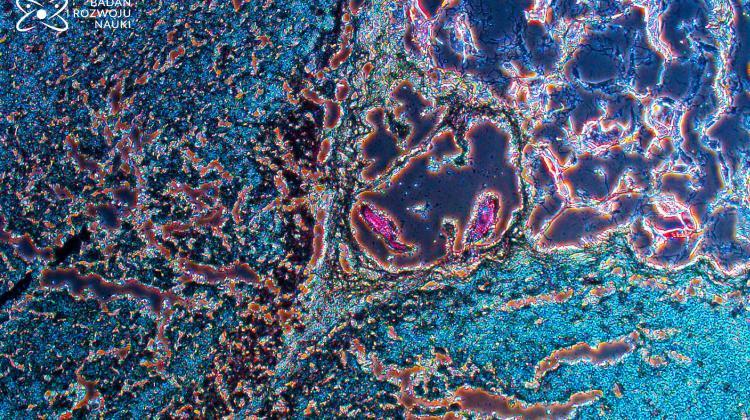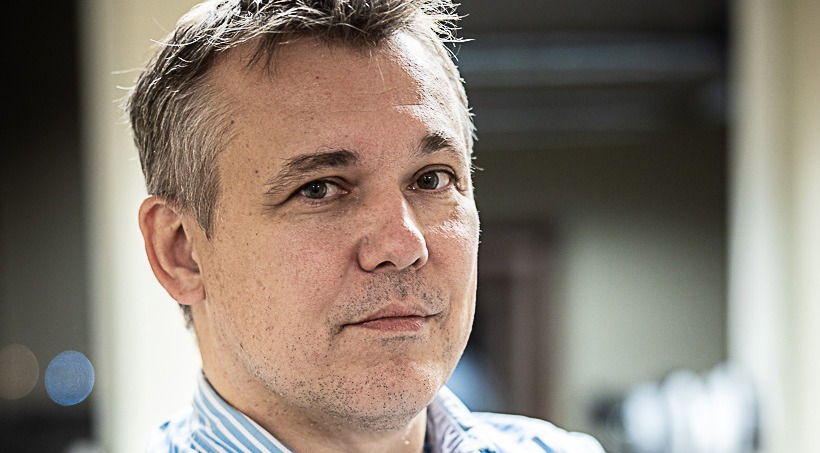Polish scientists published the world's first bionic pancreas with vessels

Gland grown cells
The world's first bionic pancreas with blood vessels was printed by Polish scientists from the Foundation for Research and Science Development, a unique work was headed by Dr. Michal Vshola . In April, scientists plan to implant the petals and islets of the pancreas mice, to test their function in a living organism. Experiments on pigs are scheduled for October 2019.“Nobody has ever grown a parenchymal organ with full vascularization ,” said the surgeon, transplantologist Dr. Michal Vshola. Previously, he developed a new method of minimally invasive treatment of complicated diabetes using endoscopic transplantation of pancreatic islets under the gastric mucosa. His new project, the bionic pancreas, will also be able to treat diabetes in the future.
The printed pancreas consists exclusively of pancreatic islets; she has no exocrine function . Researchers believe that she will be able to restore insulin production in the body of a patient with diabetes. Currently, this is only possible through the introduction of a hormone with an insulin dispenser or pump.

')
Michal Vsola, surgeon, expert in transplantation
“The human pancreas produces pancreatic juice , which helps us digest food. She also carries about a million pancreatic islets, small protrusions consisting of alpha and beta cells that produce insulin and glucagon . People with diabetes have pancreatic islets damaged, they do not have cells that produce insulin and glucagon. Only pancreatic juice is produced. Therefore, they use insulin injections. We decided to grow an organ that will produce insulin and glucagon using alpha and beta cells, ”said Dr. Vshola in an interview with PAP.Polish scientists took islet cells from animals and mixed them with bio - ink , a substance that allows cells to survive. Bioprinter began to place them in the bioreactor in accordance with the previously developed three-dimensional scheme. At the same time, using the second syringe, the researchers printed the blood vessels through which blood would flow in the organ.
“After printing our pancreas, we didn’t look at how natural it looked, we were not at all interested. We confirmed that we managed to print an organ 1–1.5 cm thick, and that this organ has a dense vascular network so that all the islet cells of the pancreas are well provided with glucose and oxygen, ”says Dr. Vshola.
Polish engineers needed to create the right bio-ink, because none of the existing inks were suitable for this experiment. Another difficulty was to ensure that the liquid in the syringe, in the cartridge - after printing and the effects of physical and chemical factors - becomes dense and forms layers, as well as preserves the structure.
“Mathematical research allowed us to assess how functional this organ will be after the activation of blood flow. How will the blood behave in this organ depending on the different values of its pressure and hematocrit - the number of red blood cells in the blood. " Some vessels had to be lengthened, others shortened, ”says Dr. Vshola.

Scientists at work
In April, the petals of the pancreas with islets will be tested on mice. These tests will end in June. In October 2019, a large fragment of the pancreas several centimeters in size with vessels will be tested on pigs. “We need to check how the organ will function in a living organism, how microcirculation will form in it and how its structure will change,” says Dr. Vshola.According to the doctor, nobody has done this before. “In other experiments, biodegradable scaffolds are populated with cells, and then implanted into humans. This can only be used for certain types of tissue, such as cartilage, bone, trachea, or bladder, but not for the liver, pancreas, kidneys, or lungs, because these are parenchymal organs that need a vascular network. Vascularization was a big problem, ”he says.
“On March 14, during a charity auction of scientific works, we will present the results of our work on the bionic pancreas and hope to establish contacts with the business with a view to further development,” says Dr. Vshola. He explains that it was this bionic pancreas that was printed from porcine cells: “But it doesn’t matter, for we see it as an example.”
The bionic pancreas 3D printing project, implemented by the Foundation for Research and Science Development , is co-funded by the National Center for Research and Development under the STRATEGMED III program. Consortium members are Nencki Institute , Warsaw University of Technology , Medical University of Warsaw , Infant Jesus Hospital and MediSpace . The goal of the project is to grow custom pancreatic cells from patient stem cells, which would eliminate the immune response.
The initiators and founders of Cellink , the pioneer of three-dimensional bioprinting, are interested in research of the Polish consortium. Eric Gatenholm and Hector Martinez will visit the Foundation's lab and take part in a charity auction, the purpose of which is to raise funds for research.
Source: https://habr.com/ru/post/445020/
All Articles